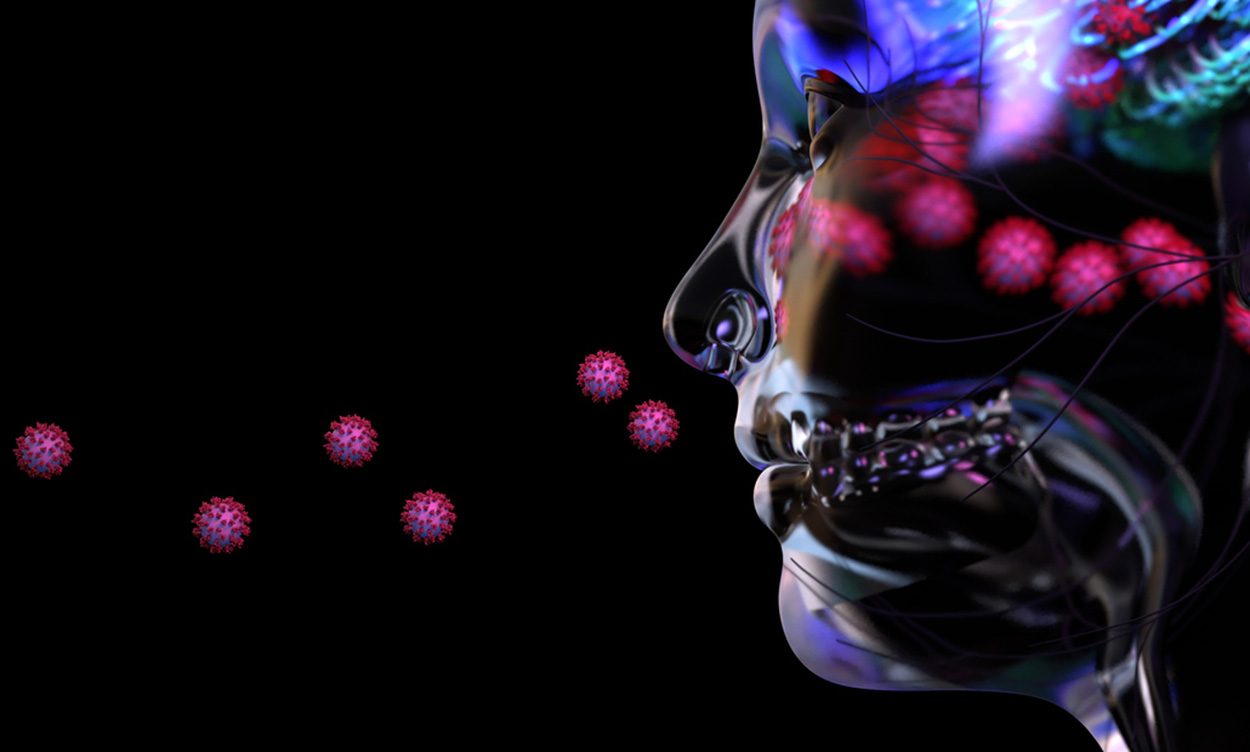Temporary loss of smell and taste is a common feature of Covid-19. Researchers have now investigated why this does not happen in all patients with coronavirus and whether there are genetic factors behind it. When comparing the genomes of nearly 70,000 people infected with SARS-CoV-2, they found variants in the environment of two genes that at least partially determine the risk of loss of sense of smell. Both genes contain building instructions for enzymes that are closely related to the process of smell and can explain the loss of smell in the event of a malfunction.
The nasal mucosa is one of the tissues that is first affected when infected with the SARS-CoV-2 virus. The virus primarily attacks the supporting cells and ciliated cells in the cilia-covered nasal mucosa. These types of cells have a particularly large number of ACE2 receptors on their surface, thus providing the pathogen with the appropriate docking point. However, it remained unclear for a long time whether olfactory sensory cells were also infected and damaged by the virus. The impaired sense of smell and taste that occurs in many COVID-19 patients indicates an attack on the olfactory cells. However, recent studies indicate that these sensory failures are not due to a direct effect of the virus on the olfactory cells or the olfactory bulb, but rather represent a kind of collateral damage. The exact mechanisms behind olfactory disorders and the question of why not all affected people develop these symptoms remains unclear.
Comparing the genomes of nearly 70,000 patients
To get to the heart of this question, Janie Shelton and colleagues at US genetic analysis firm 23andMe looked for potential genetic risk factors for loss of smell. To do this, they evaluated the genetic data of 69,841 people tested from the USA and Great Britain who tested positive for SARS-CoV-2. “Of these individuals, 68 percent reported that they experienced defects in their sense of smell and taste during the injury,” the team said. These symptoms were significantly more common in people of European descent than in those of Asian or African descent. Using data from all participants, Chilton and her colleagues conducted a genome-wide association analysis (GWAS), looking for genetic variants that are more common in people with coronavirus-related olfactory disorders than in those without.
In these comparative analyses, it was observed that the locus of a single gene changed significantly more frequently in those with olfactory disorders. “Although this genetic association is most pronounced among European populations, effect sizes are consistent across populations,” Shelton and colleagues say. From genetic data and the frequency of loss of smell in test subjects, the scientists concluded that variants in the locus of this gene increase the risk of loss of smell by about 11 percent. More detailed analyzes revealed that the variants in question are close to the two genes UGT2A1 and UGT2A2. “These two genes are not only the closest, but are also biologically plausible candidates,” the team says.
Important enzymes to “clean up” smell perception
The two genes are primarily active in the cells of the nasal mucosa and contain building instructions for enzymes that play an important role in smell perception. As the research team explains, these enzymes are primarily responsible for binding to odorous substances that have already been detected and thus neutralizing them. As a result, these odorous substances become invisible to the olfactory receptors, so to speak, and these substances can prepare themselves for the perception of additional new odors. This is important so that odor stimuli do not get stuck in the nose and prevent further perception of odors. The enzymes ensure that the odor disappears once the stimulating odor in the environment is gone.
However, how genetic variants that have now been identified affect this process is still not entirely clear as is the question of the effect of SARS-CoV-2 infection on the activity of these genes. However, in their discovery, Shelton and colleagues see the first indications that genetic factors also play a role in determining whether coronavirus infection affects an infected person’s sense of smell. The findings could also help clarify the biological mechanisms behind infection-related olfactory disturbances.
Quelle: Janie Shelton (23andMe Inc., Sunnyvale) et al., Nature Genetics, doi: 10.1038/s41588-021-00986-w

“Alcohol buff. Troublemaker. Introvert. Student. Social media lover. Web ninja. Bacon fan. Reader.”





More Stories
Principles and features of the folk nutritional principle
Science: The percentage of women in mint topics rises to a third
Newly appointed Science, Research and Innovation Council